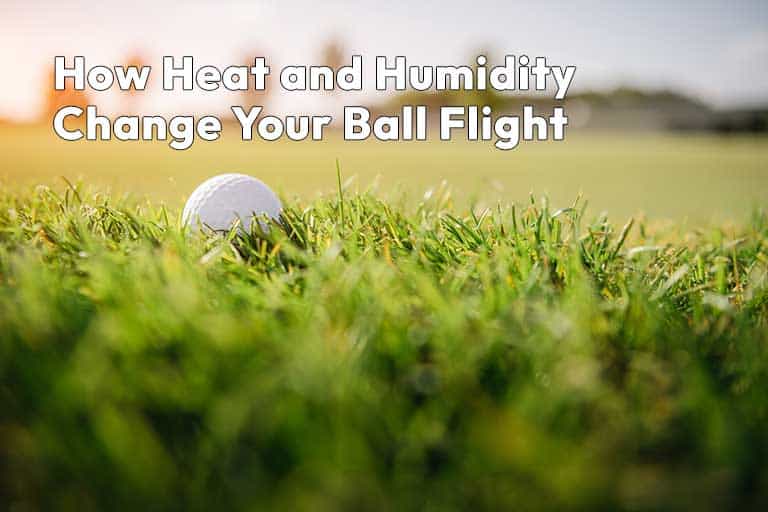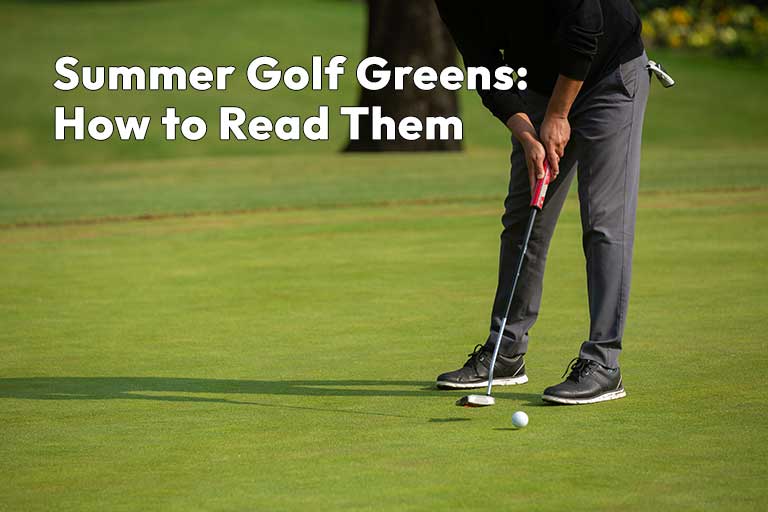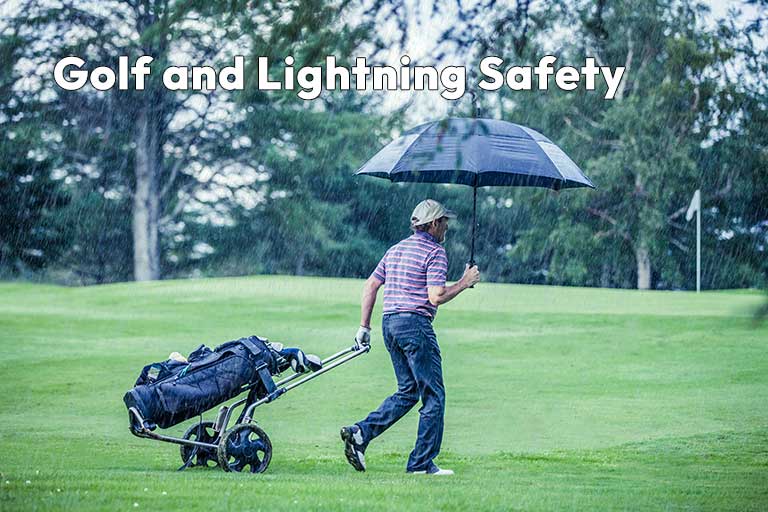Table of Contents
In the world of golf, the elements are as much a part of the game as the clubs you swing or the balls you strike. Heat and humidity, often dismissed as mere background conditions, can significantly impact your game. Let’s get this straight: understanding how these factors change your ball flight is not just advantageous it’s essential if you want to master the course. As someone who’s sweated through many summer rounds, let me tell you, ignorance is not bliss. Its strokes added to your scorecard.
Impact of Heat and Humidity
Learn how environmental factors influence your golf game and how to adapt effectively. – Heat increases air density, resulting in longer ball flights, while high humidity can lead to softer shots due to decreased air density. – To combat these effects, consider adjusting your club selection, aim, and swing speed based on the conditions. – Understanding the relationship between temperature and humidity will help you make informed decisions on the course.
Golf Ball Flight Basics
Before diving into the meteorological nuances, let’s briefly touch on how a golf ball behaves in flight. Essentially, a golf balls flight is influenced by the laws of physics: launch angle, spin rate, and initial velocity. When you make contact with the ball, these factors combine to determine the trajectory and distance the ball will travel.
- Launch Angle: This is the angle at which the ball leaves the clubface. Higher launch angles generally result in longer carry distances, assuming spin and velocity are optimized.
- Spin Rate: Spin stabilizes the ball in flight and affects how it lands. Higher spin rates can help in achieving more height and stopping power on the greens.
- Initial Velocity: The speed of the ball as it leaves the clubface. Higher speeds usually result in longer shots if the other factors are well-balanced.
These physics principles are your baseline. They are altered by external conditions, including heat and humidity, in ways that are not immediately obvious but highly significant.
How Heat and Humidity Affect Golf Ball Flight
Temperature
It’s no secret that a hot day on the course can be exhausting, but did you know it can also change how your ball flies? Warmer temperatures tend to make the air less dense, which allows the ball to travel further. This is because less dense air creates less drag on the ball. A study from the United States Golf Association (USGA) found that for every 10-degree increase in temperature, a golf ball could travel around two yards further on a drive.
From personal experience, playing in the heat can be both a blessing and a curse. I remember a tournament where the temperature soared to 95°F. My drives were sailing longer than usual, catching me by surprise and forcing me to recalibrate my club selection on the fly. It was a vivid reminder that Mother Nature is as much a part of the game as the players themselves.
Insider Tip: According to golf pro Tom Watson, “Use the temperature to your advantage. In warmer weather, you might consider clubbing down, especially if the pin is at the back of the green.”
Humidity
Humidity is another sneaky factor. While it might seem counterintuitive, humid air is actually less dense than dry air, allowing the ball to travel slightly farther. However, the effect of humidity on ball flight is less pronounced than that of temperature. The differences are subtle, often only a few yards, but for precision players, every yard counts.
Playing a round in the humid air of coastal South Carolina, I found that my short iron shots were going a touch further than expected. These small adjustments, learned through experience, can make or break a round.
Insider Tip: Golf instructor David Leadbetter suggests, “In humid conditions, focus on maintaining your grip. Sweaty palms can lead to less control, affecting accuracy more than distance.”
How to Adjust Your Game to Heat and Humidity
Real-Life Experience: Adjusting to Heat and Humidity on the Course
It was a sweltering July afternoon when I decided to hit the links with a few friends at Pine Valley Golf Club. The temperature soared to around 95 degrees Fahrenheit, and the humidity made it feel even hotter. As I stood on the first tee, I recalled a time last summer when I had struggled on a similarly humid day. I hit my tee shot straight down the fairway, feeling great, but the ball landed much shorter than I had anticipated.
This time, I was determined to learn from that experience. I grabbed my 7-iron, a club I usually hit about 150 yards, and decided to make some adjustments. Remembering that heat and humidity can affect ball flight by reducing density, I knew I might need to compensate for the reduced distance.
After my first swing, which flew 10 yards shorter than normal, I realized I needed to both adjust my club selection and my aim. I opted for an 8-iron for my next shot, aiming slightly left of the green to account for the wind pushing the ball further right. As I made the adjustment, I felt more confident, and to my delight, the ball landed exactly where I had hoped.
By the end of the round, I had not only improved my score but also gained a deeper understanding of how environmental factors can influence my game. That day taught me that acknowledging the conditions and adapting my strategy is crucial for success on the golf course.
Adjust Your Club Selection
Given that heat and humidity can increase your balls distance, adjusting your club selection is a must. In warmer conditions, you might find that you’re consistently overshooting your target. Switching to a shorter club can give you more control without sacrificing distance.
For instance, if you typically use a 7-iron for a particular distance, you might opt for an 8-iron on a hot, humid day. This adjustment can help you maintain accuracy while taking advantage of the added distance.
Insider Tip: Always carry a rangefinder or GPS device to measure your distances accurately. Real-time data can be invaluable when adjusting club selection due to weather conditions.
Adjust Your Aim
With longer ball flights, you might also need to adjust your aim. This is especially true if the fairways are narrow or if there are hazards in play. Aiming slightly left or right of your usual target can help accommodate the extended carry and potentially prevent trouble.
I recall a game in Florida where my ball kept finding the rough because I failed to adjust my aim for the longer distances. It was a frustrating lesson in the importance of considering environmental factors in your strategy.
Insider Tip: Use practice rounds to experiment with aiming adjustments. Familiarizing yourself with how your ball reacts in different conditions can give you an edge in competitive play.
Adjust Your Swing Speed
Finally, consider adjusting your swing speed. In hot and humid conditions, you might find that a slightly slower, more controlled swing yields better results. This is because a controlled swing can help maintain balance and accuracy, which are critical when the ball is carrying further than expected.
During a particularly sweltering tournament, I noticed my swing speed creeping up as I tried to muscle through the heat. It wasn’t until I consciously slowed down that my accuracy improved, allowing me to capitalize on the extra distance offered by the weather.
Insider Tip: Focus on smooth tempo rather than pure speed. A balanced swing promotes better contact and control, which are essential when dealing with environmental variables.
Final Thoughts
Understanding how heat and humidity affect your golf ball flight is not just about improving your game it’s about respecting the complexity of golf itself. Every round is a unique puzzle, and the weather is a crucial piece. By adjusting your club selection, aim, and swing speed, you can turn potential challenges into opportunities for strategic play.
For those looking for more tips on how to manage weather conditions, our article on how cold weather affects your golf game can provide additional insights. Whether it’s sweltering heat or biting cold, mastering these elements can elevate your game from good to great.
In conclusion, the next time you step onto the course and feel the sun beating down or the humidity rising, remember: these are not just conditions to endure but elements to master. Embrace them, adjust accordingly, and watch your game soar.
Questions & Answers
How does humidity affect my golf ball flight?
Humidity increases air density, causing the ball to fly shorter distances.
What changes should I make to my swing in humid weather?
Focus on maintaining a smooth tempo to help control the ball better.
Who should I consult about adjusting my game for humidity?
A qualified golf instructor can provide personalized advice for your game.
How can I adapt my equipment for heat and humidity?
Use moisture-wicking grips and consider lighter clubs for better handling.
What is the best way to practice in hot and humid conditions?
Schedule shorter practice sessions to avoid fatigue and stay focused.
Why should I care about heat and humidity on my game?
Understanding these factors can enhance your performance and enjoyment.






